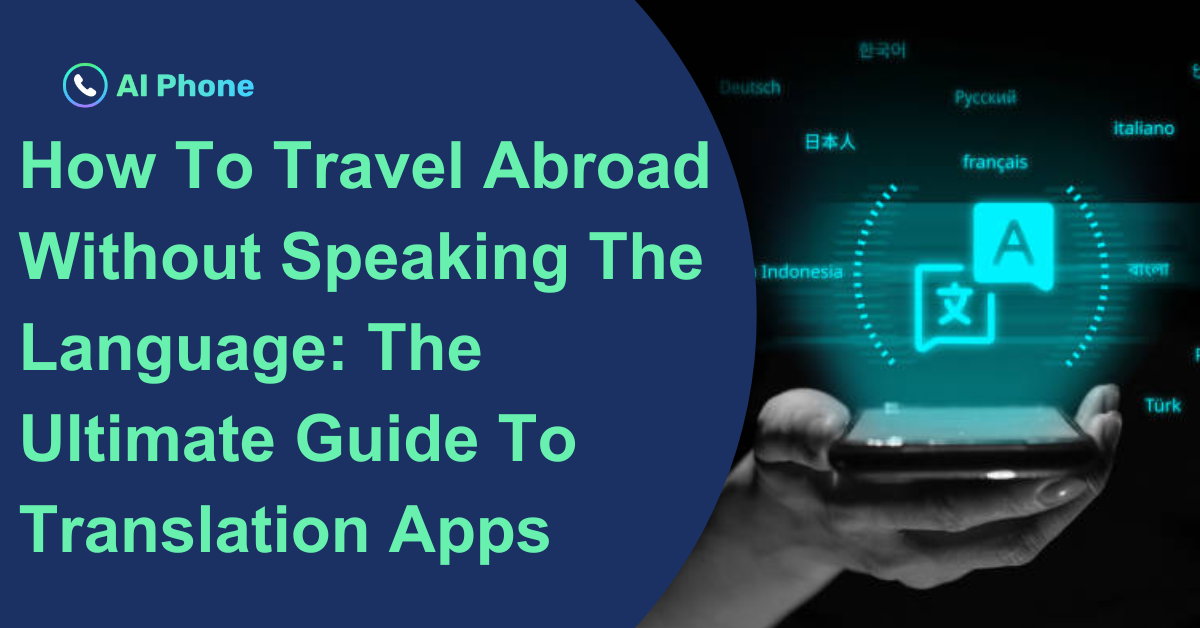Snap, Translate, and Communicate Wherever You Are
Language barriers in the real world—street signs, medical forms, restaurant menus—can turn daily tasks into moments of frustration. Whether you’re a traveler, international student, immigrant, or global business professional, camera translation apps are becoming essential tools in your communication toolkit.
But not all apps are built the same. Some excel at on-the-go travel translation, while others offer more advanced features like real-time photo-to-voice or offline OCR. Here’s a breakdown of the 7 best camera translation apps available in 2025—and what sets each apart.
How Camera Translation Apps Work (and Why It Matters)
Camera translation apps combine Optical Character Recognition (OCR) with AI-powered translation engines to detect and translate text in photos—menus, signs, official documents, etc.—instantly. Many apps now support live AR translation, where text is translated directly over the image through your camera lens. Others offer a more traditional scan-then-translate approach. Choosing the right one depends on your needs, speed, and privacy expectations.
Evaluation Criteria
To make this list, each app was evaluated on the following:
- Language support
- Accuracy of OCR
- Offline capabilities
- User interface and experience
- Privacy and data handling policies
- Platform availability
📱 The 7 Best Camera Translation Apps in 2025
1. Google Translate
Best For: Fast, Free, and Familiar Use
Platform: Android, iOS, Web
Languages: 100+
Google Translate remains a go-to for casual users. Its instant camera translation feature lets you point and translate in real time, which is particularly useful for menus, signs, and packaging. It supports offline OCR packs for key languages. However, privacy concerns have been raised due to data sharing across Google services.
2. Microsoft Translator
Best For: Business & Multi-Platform Users
Platform: Android, iOS, Windows
Languages: 70+
Known for its cross-platform sync and integration with Microsoft tools like Teams and Office, Microsoft Translator’s camera feature offers accurate translations with a clean interface. Though it lacks AR translation, it supports scanned image uploads and works well offline.
3. Papago by Naver
Best For: Asian Languages
Platform: Android, iOS
Languages: Korean, Chinese, Japanese, Thai, Vietnamese, Indonesian, and more
Papago is ideal for those traveling or living in East Asia. It leverages Naver’s AI models to deliver precise camera-based translations tailored for regional languages. One limitation is its narrower language range outside of Asian markets.
4. iTranslate Translator
Best For: Tourists and Offline Travelers
Platform: Android, iOS
Languages: 100+
iTranslate offers a dedicated Lens camera feature and strong offline functionality (with premium packs). Its interface is tourist-friendly and supports voice playback of translated text. The free version includes ads, and some languages require subscriptions.
5. Waygo (iOS Only)
Best For: Translating Menus in East Asia
Platform: iOS
Languages: Chinese, Japanese, Korean
Waygo doesn’t need an internet connection, making it ideal for remote areas. It excels at food menus and signage but is limited to only three languages and no longer actively updated—still, it’s surprisingly effective for basic needs.
6. Camera Translator by Talkao
Best For: Visual Text in Multiple Fonts
Platform: Android, iOS
Languages: 100+
This lesser-known app offers a flexible OCR engine that supports handwriting, various font styles, and curved text. It works well for translating restaurant bills, documents, and posters. Offline mode is available in the paid version.
7. AI Phone
Best For: Immigrants, International Professionals, and Multilingual Users
Platform: Android, iOS (www.aiphone.ai)
Languages: 150+
AI Phone is a real-time multilingual communication app that goes beyond traditional translation tools. Its Camera Translation feature allows users to snap photos of signs, menus, forms, and more—and get instant, accurate translations in over 150 languages. What makes it stand out is the seamless integration with live phone and app-based conversations.
For example, a user can translate a government form, then immediately place a call to a public agency, all within the app—with real-time voice translation on both sides. It also supports WhatsApp and WeChat voice/video call translation, plus unique features like voice cloning (where translated speech retains the user’s own voice tone). It’s designed specifically for complex, real-world communication scenarios:
- Immigrants calling service providers or landlords
- Parents communicating with schools
- International delivery workers and truckers coordinating with clients
- Travelers navigating non-English-speaking environments
AI Phone also generates summaries after each translated call, ideal for keeping track of important exchanges.
Feature Comparison Table
| App | Languages | Offline Mode | Best For | Voice/Call Integration | Free/Paid |
|---|---|---|---|---|---|
| Google Translate | 100+ | ✔️ | General Use | ❌ | Free |
| Microsoft Translator | 70+ | ✔️ | Office & Multiplatform Users | Limited | Free |
| Papago | 10+ | ✔️ | East Asian Language Support | ❌ | Free |
| iTranslate | 100+ | ✔️ (Premium) | Tourists | ❌ | Freemium |
| Waygo | 3 | ✔️ | Menus, Food Signs | ❌ | Free (Limited) |
| Camera Translator | 100+ | ✔️ (Premium) | Flexible Text Recognition | ❌ | Freemium |
| AI Phone | 150+ | ✔️ | Complex Real-Life Scenarios | ✔️ (Live + Summary) | Freemium |
Conclusion: Pick Based on Purpose
If you need a quick way to read a menu or translate a street sign, free tools like Google Translate or Papago may be sufficient. But if your use case involves real-time, multilingual interaction, such as calling government agencies, fixing daily immigrant life issues, or coordinating across borders, then AI Phone offers unmatched utility.
With camera, call, voice, and app-based translation in one interface, it’s a tool built for the real world—not just travelers, but people living, working, and communicating across cultures every day.

